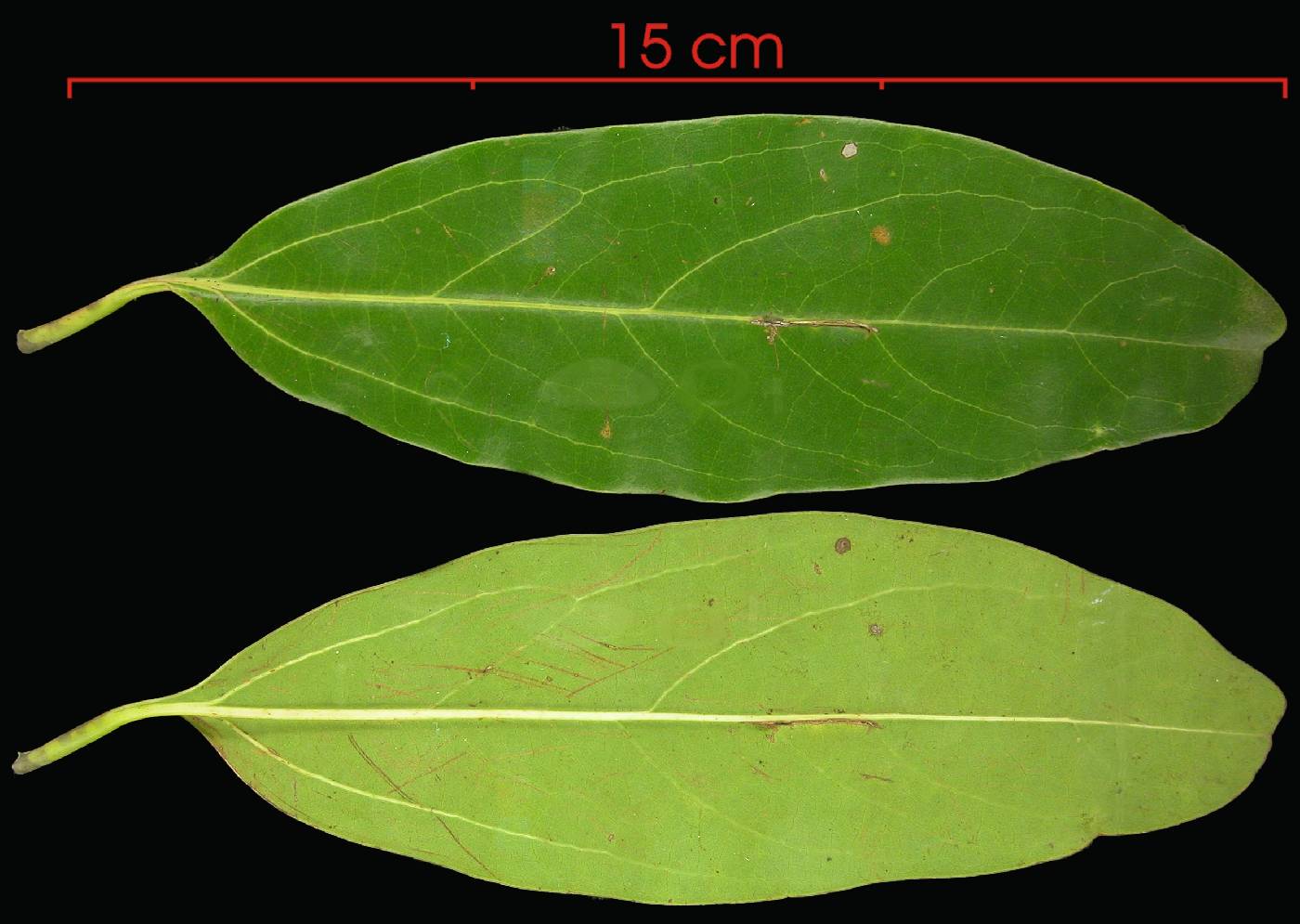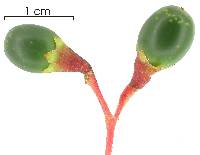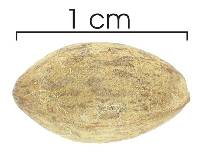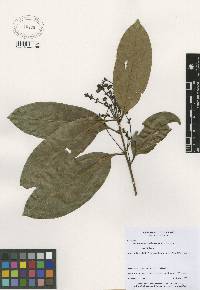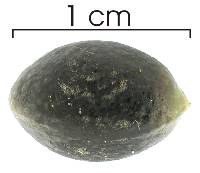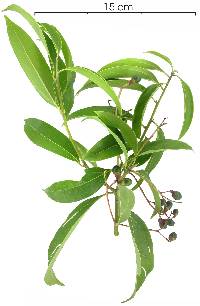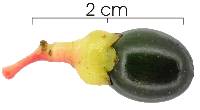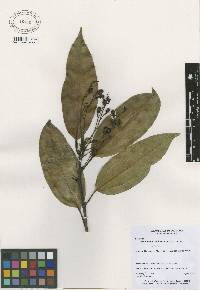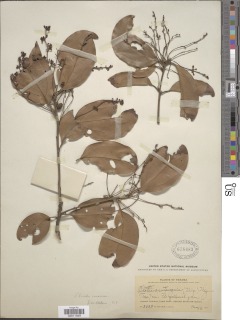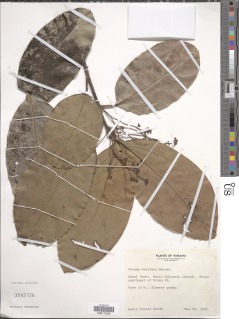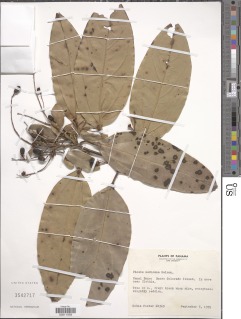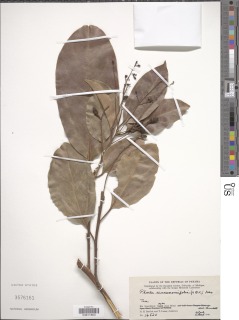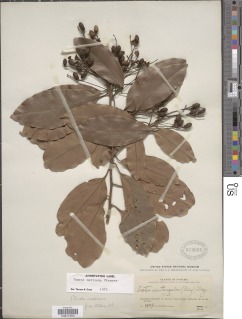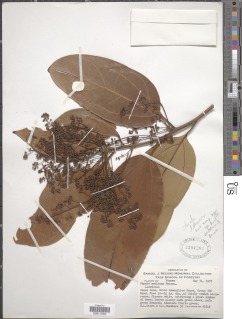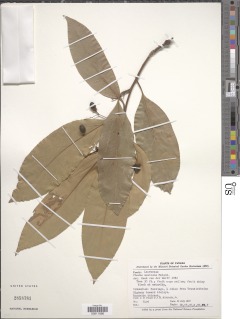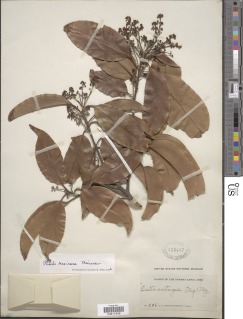

|
|
|
|
Family: Lauraceae
Sigua, more...sigua blanca
[Cinnamomum mexicanum (Meisn.) Kosterm., morePhoebe cinnamomifolia Nees, Phoebe mexicana Meisn.] |
Descripción: Árbol de 10 a 30 m de alto. Copa umbelada o redondeada. Tronco con raíces tablares pequeñas y a veces con rebrotes en la base. Corteza exterior gris y lenticelada. Ramitas terminales verdes y glabras. Hojas simples y alternas, de 8-30 x 4-9 cm, elípticas, con ápice agudo, bordes enteros y base redondeada o aguda. Las hojas son aromáticas al estrujarlas y presentan tres nervaduras suprabasales. Pecíolo de 1-2 cm de largo y ligeramente acanalados en la parte superior. Flores verdes o amarillentas, aromáticas. Frutos en drupas, de 1 cm de largo, verdes y con una copa basal de color amarillento, tornándose negros al madurar. Datos Ecológicos: La especie crece a bajas y medianas elevaciones, en lugares húmedos o muy húmedos. En Panamá se encuentra en las provincias de Chiriquí, Coclé, Colón, Darién, Herrera, Panamá y Veraguas. Florece y fructifica de abril a septiembre. Las flores son visitadas por abejas y otros insectos. Las semillas son dispersadas por animales. Especies Parecidas: A menudo se confunde con LK nectpu Nectandra purpurea LK2 , pero en N. purpurea las hojas nuevas son de color morado y tienen los ápices largos y acuminados. Usos: La madera es empleada en la construcción de puentes y pisos industriales. Tree, to 25 m tall and 30 cm dbh; outer bark planar, minutely lenticellate; inner bark tan, granular, moderately thin; glabrous but with fine, minute trichomes on younger stems, petioles, axes of inflorescences, and pedicels; smaller stems angulate with prominent ribs extending below petioles; sap with a faint sweet odor. Petioles stout, broadly canaliculate, to 2.5 cm long; blades +/- elliptic to oblong-elliptic, rounded or bluntly to narrowly acuminate at apex, often falcate and downcurved, obtuse to acute or attenuate at base, 9-29 cm long, 4-14.5 cm wide, conspicuously 3-veined from above base, pliveined at base, coriaceous, the lower axils often weakly tufted with trichomes. Flowers greenish-white, bisexual, 2-3 mm long, in numerous axillary or subterminal racemose panicles 12-20 cm long; pedicels 3-5 mm long; perianth lobes 6, unequal (the outer 3 shorter), ovate, obtuse to rounded at apex, glabrous or weakly pubescent outside, +/- sericeous inside, erect at anthesis, persistent in fruit; stamens 9, subequal, usually longer than outer perianth lobes, shorter than inner ones; filaments longer than anthers, the outer 6 fused to perianth lobes in basal half, ca 1.7 mm long; anthers with 4 thecae in 2 definite planes, the inner 3 anthers extrorse, to 2 mm long or more, adjacent to and equaling or longer than style, alternating with 3 cordate stipitate staminodia; glands longer than and alternating with filaments between the outer and inner whorl of stamens; ovary glabrous, +/- equaling length of style; style +/- simple. Fruits obovoid to ellipsoid, 1-1.5 cm long and 7-10 mm wide, dark green with light green spots, the cupule campanulate, with the enlarged perianth lobes ca 2 mm long, glabrous. Croat 14819. May and June. The fruits mature by July and August. Monographic work will probably show that this species is much more wide ranging. The species is variable and should probably include P. elongata (Vahl) Nees of the West Indies, P. costaricana Mez & Pitt. of Costa Rica and western Panama, and P. cinnamomifolia (H.B.K.) Nees of South America from Colombia and Venezuela to Peru. Mexicoto Panama, Colombia, and Venezuela. In Panama, occasional in tropical moist forest in the Canal Zone, Panama, and Darien, especially on the Atlantic slope, or at medium elevations of the Pacific slope such as in Panama (lower slopes of Cerro Campana). |
|
|
|

